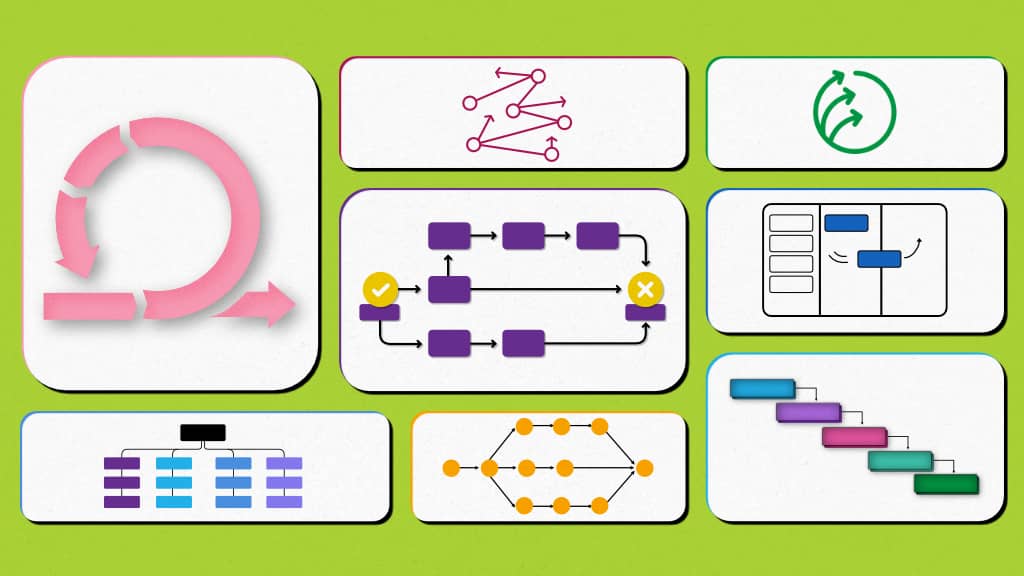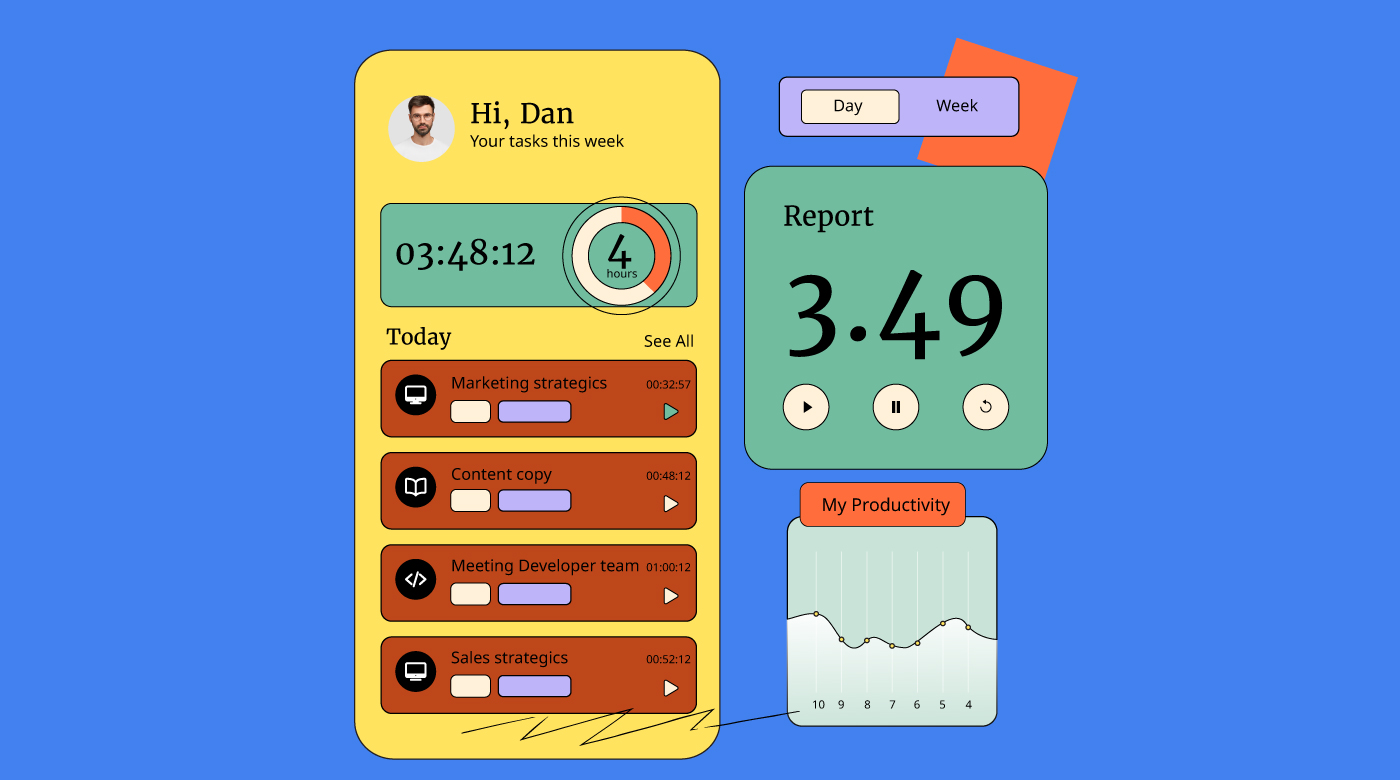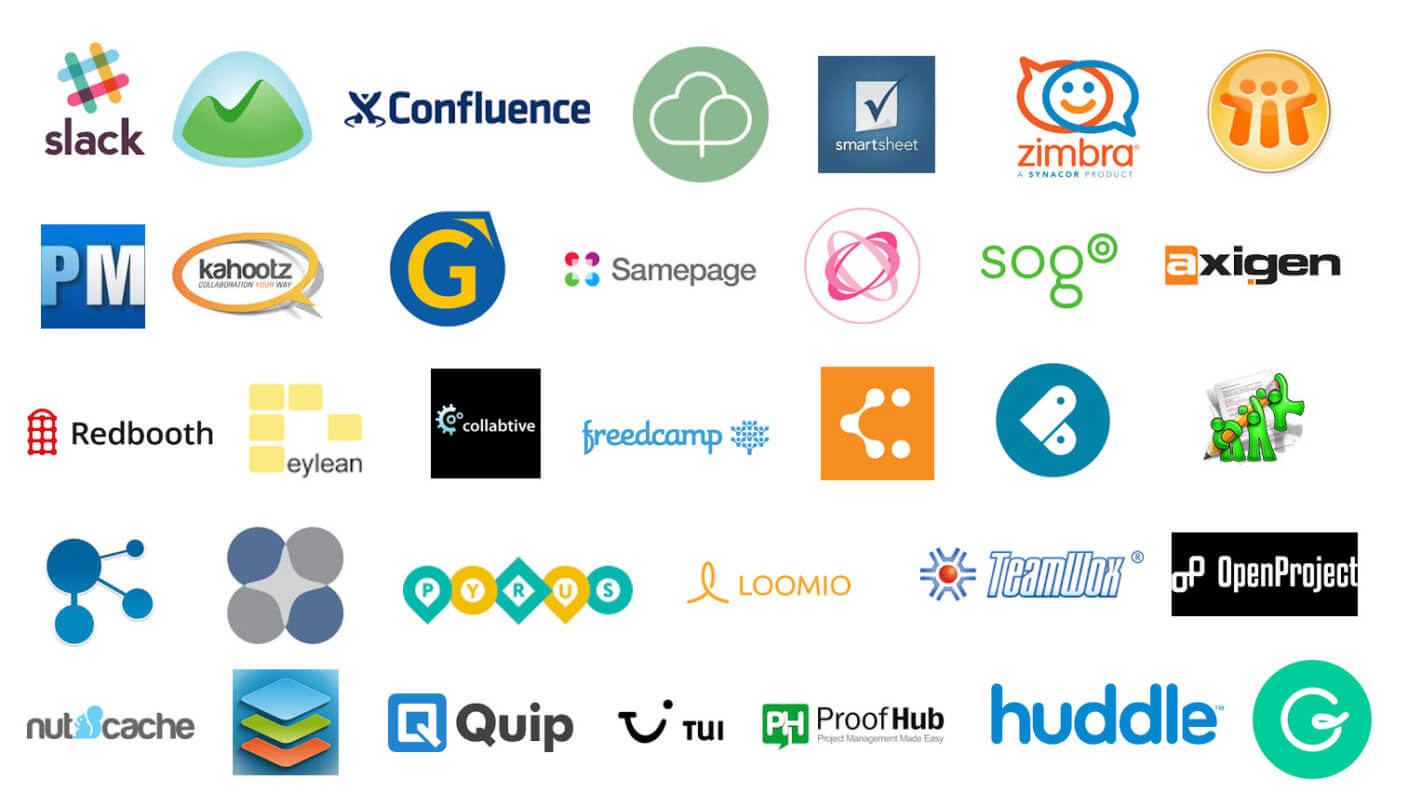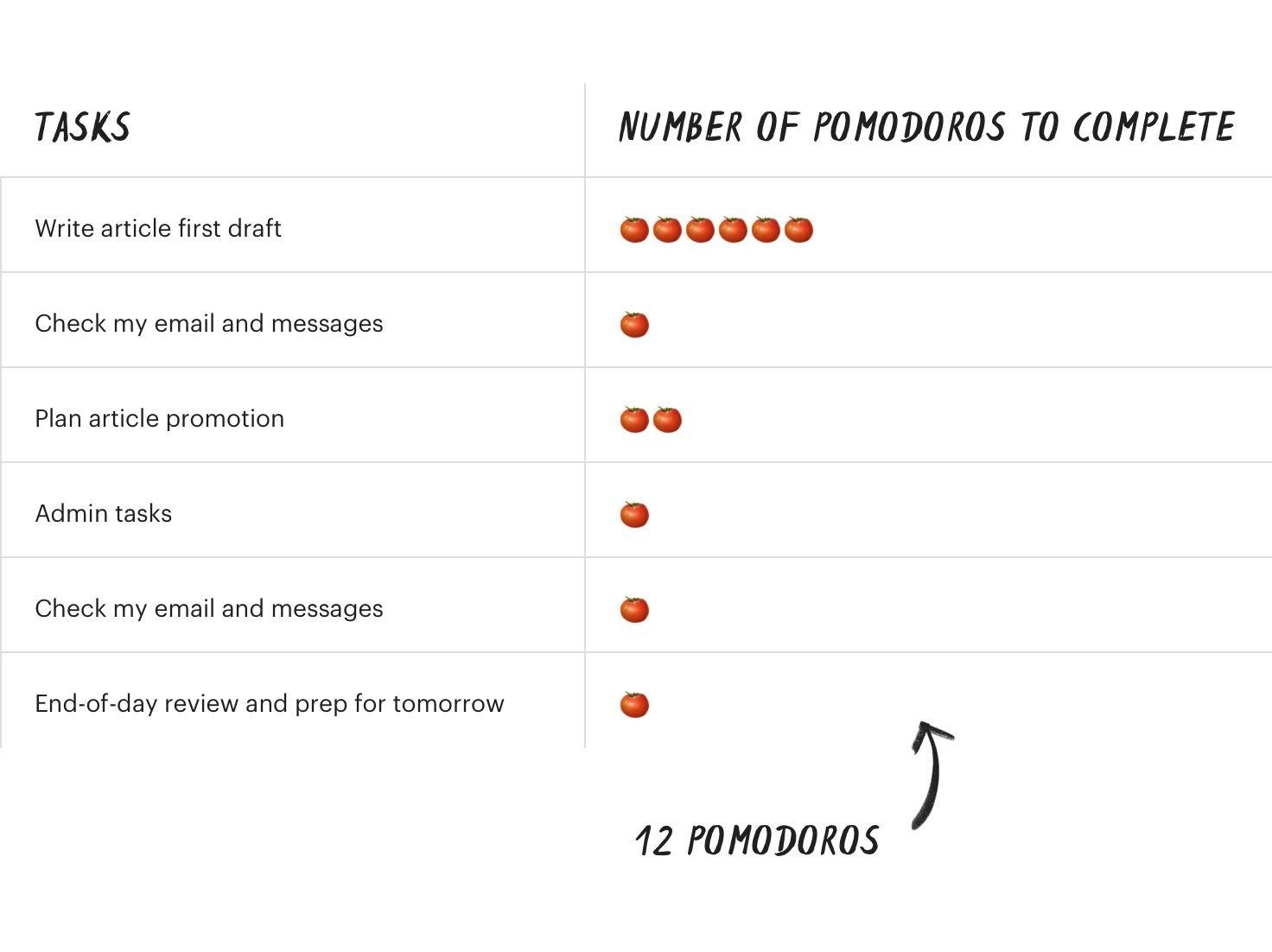
Published: Dec 1, 2024
How to Start Freelancing in 2025: Your Ultimate Guide
How to Start Freelancing in 2025: Your Ultimate Guide
Hey there! I’ve been in the freelancing game for years, and let me tell you, it’s been one wild ride. From feast to famine (and back again), I’ve seen it all. But in 2025? The freelance landscape is hotter than ever. So, buckle up, buttercup – I’m about to spill the tea on how to kick-start your freelance career and make it rain clients!
TLDR: What's the first step to becoming a successful freelancer in 2025?
1️⃣ How do I identify my marketable skills?
Start by assessing your strengths and passions. Look at your work history, hobbies, and educational background. Then, research in-demand skills on freelance platforms to see where your expertise aligns with market needs.
2️⃣ What tools do I need to start freelancing?
Essential tools include a reliable computer, high-speed internet, project management software (like Trello or Asana), time-tracking apps (such as Toggl), and communication platforms (like Slack or Zoom). Don’t forget about financial tools for invoicing and taxes!
3️⃣ How do I find my first freelance clients?
Start by leveraging your network – let friends, family, and former colleagues know you’re available for freelance work. Create profiles on popular freelance platforms like Upwork or Fiverr. Also, consider cold pitching to companies in your niche and showcasing your skills on social media platforms.
Table of Contents
- Identify Your Freelance Niche
- Set Up Your Freelance Business
- Find Your First Clients
- Manage Your Freelance Career
- Build Your Online Presence
Identify Your Freelance Niche
Finding your sweet spot in the freelance world is like picking the perfect flavor at an ice cream shop - you want something that satisfies you and keeps clients coming back for more. Let’s break it down:
Assess Your Skills and Passions
First things first, grab a pen and paper (or open up a fresh Google Doc if you’re fancy) and jot down:
- Skills you’ve mastered
 What are you really good at? Maybe you’re a whiz with Adobe Photoshop or you can write killer copy that sells like hotcakes.
What are you really good at? Maybe you’re a whiz with Adobe Photoshop or you can write killer copy that sells like hotcakes. - Things you love doing: What gets you out of bed in the morning? If you’re passionate about sustainable living, that could be your golden ticket.
- Past work experiences: Don’t forget about those skills you’ve picked up on the job. That stint as a barista? You’re probably great at customer service and multitasking.
Research Market Demand
Now that you know what you bring to the table, it’s time to see if anyone’s buying. Here’s how:
- Check freelance platforms
 Hop onto sites like Upwork or Fiverr and see what kind of gigs are hot right now.
Hop onto sites like Upwork or Fiverr and see what kind of gigs are hot right now. - Browse job boards Sites like Indeed can give you a feel for what companies are looking for.
- Talk to other freelancers: Join some Facebook groups or LinkedIn communities and ask what’s working for them.
Popular Freelance Niches in 2025
Based on current trends and projections, here are some niches that are killing it:
- Artificial Intelligence (AI) Specialists
 With AI booming, folks who can work with machine learning algorithms or develop AI-powered apps are in high demand.
With AI booming, folks who can work with machine learning algorithms or develop AI-powered apps are in high demand. - Virtual Reality (VR) Content Creators
 As VR becomes more mainstream, there’s a growing need for designers and developers who can create immersive experiences.
As VR becomes more mainstream, there’s a growing need for designers and developers who can create immersive experiences. - Sustainability Consultants
 With climate change at the forefront, businesses need experts to help them go green.
With climate change at the forefront, businesses need experts to help them go green. - Cybersecurity Specialists
 As more of our lives move online, protecting digital assets is more crucial than ever.
As more of our lives move online, protecting digital assets is more crucial than ever. - Remote Work Facilitators
 Helping companies transition to and manage remote teams is still a hot niche.
Helping companies transition to and manage remote teams is still a hot niche.
Narrow Down Your Options
Okay, so you’ve got some ideas. Now let’s get specific:
- Micro-niches
 Instead of just “writer,” think “eco-friendly product description writer for startups.” The more specific, the less competition.
Instead of just “writer,” think “eco-friendly product description writer for startups.” The more specific, the less competition. - Combine skills: Maybe you’re a graphic designer who knows SEO. Bam! You’re now an “SEO-optimized infographic designer.”
- Solve a problem: What’s a common headache in your industry? Be the aspirin.
Test the Waters
Before you dive in headfirst:
- Take on a small project: Find a friend or use a freelance platform to do a test run in your chosen niche.
- Create a sample
 If you’re a writer, write a blog post. Designer? Make a mock-up. Show off what you can do.
If you’re a writer, write a blog post. Designer? Make a mock-up. Show off what you can do. - Get feedback: Ask for honest opinions from people in your network or potential clients.
Remember, your niche isn’t set in stone. The freelance world is always changing, and so can you. Stay flexible, keep learning, and don’t be afraid to pivot if something’s not working. Now go out there and make your mark in the freelance world of 2025!
Set Up Your Freelance Business
Alright, let’s get down to brass tacks and set up your freelance biz! Trust me, I’ve been there, done that, and bought the t-shirt. Here’s how to get your freelance empire off the ground in 2025:
Create Your Home Office Haven
First things first, you need a space that screams “I’m a professional” (even if you’re rocking pajama pants). Here’s what you’ll need:
Ergonomic Chair
 Your back will thank you. I swear by my Herman Miller Aeron - it’s pricey, but worth every penny.
Your back will thank you. I swear by my Herman Miller Aeron - it’s pricey, but worth every penny.Standing Desk
 Mix it up and avoid the dreaded “freelancer hunch.” The Jarvis Bamboo is my go-to.
Mix it up and avoid the dreaded “freelancer hunch.” The Jarvis Bamboo is my go-to.Lighting Natural light is king, but if you’re stuck in a cave, invest in a good desk lamp. The BenQ ScreenBar is a game-changer.
Noise-Cancelling Headphones
 Because your neighbor’s dog won’t stop barking. The Sony WH-1000XM5 are my current faves.
Because your neighbor’s dog won’t stop barking. The Sony WH-1000XM5 are my current faves.
Essential Business Tools
Now, let’s talk tech and tools:
Project Management Software
 Keep your ducks in a row with Asana. It’s like a digital to-do list on steroids.
Keep your ducks in a row with Asana. It’s like a digital to-do list on steroids.Time Tracking App
 Toggl Track is my ride-or-die. It’s simple, accurate, and keeps me honest about how much Netflix I’m actually watching.
Toggl Track is my ride-or-die. It’s simple, accurate, and keeps me honest about how much Netflix I’m actually watching.Cloud Storage
 Google Drive or Dropbox - pick your poison. Just make sure your work is backed up!
Google Drive or Dropbox - pick your poison. Just make sure your work is backed up!Communication Tools
 Slack for quick chats, Zoom for video calls. Because emailing is so 2010.
Slack for quick chats, Zoom for video calls. Because emailing is so 2010.
Legal and Financial Stuff (Yawn, But Important)
Don’t worry, I’ll make this as painless as possible:
Business Structure
 Most freelancers start as sole proprietors, but an LLC might be worth considering. Chat with a local accountant to figure out what’s best for you.
Most freelancers start as sole proprietors, but an LLC might be worth considering. Chat with a local accountant to figure out what’s best for you.Contracts
 Always, always, ALWAYS use contracts. Hello Bonsai has some great templates to get you started.
Always, always, ALWAYS use contracts. Hello Bonsai has some great templates to get you started.Invoicing Software
 FreshBooks is my go-to. It’s user-friendly and makes tax time a breeze.
FreshBooks is my go-to. It’s user-friendly and makes tax time a breeze.Business Bank Account
 Keep your personal and business finances separate. I use Chase Business Complete Banking - they’ve got great online tools.
Keep your personal and business finances separate. I use Chase Business Complete Banking - they’ve got great online tools.
Freelance-Friendly Insurance
Because adulting is hard, but necessary:
Health Insurance
 Check out the Healthcare.gov Marketplace for options. In 2025, there are more freelancer-friendly plans than ever.
Check out the Healthcare.gov Marketplace for options. In 2025, there are more freelancer-friendly plans than ever.Professional Liability Insurance
 Also known as errors and omissions insurance. Hiscox specializes in coverage for freelancers.
Also known as errors and omissions insurance. Hiscox specializes in coverage for freelancers.
Stay Legal, Stay Safe
A few more things to keep you on the right side of the law:
Business Licenses Check with your local city hall about what you need. It varies by location and industry.
Tax ID Number
 You might need an EIN from the IRS. It’s free and easy to get online.
You might need an EIN from the IRS. It’s free and easy to get online.Data Protection If you’re handling client data, make sure you’re compliant with laws like GDPR and CCPA.
Setting up your freelance business might seem overwhelming, but take it one step at a time. Remember, Rome wasn’t built in a day, and neither is a successful freelance career. Now, go forth and conquer the freelance world of 2025!
Find Your First Clients
Okay, let’s get down to brass tacks. Finding your first clients can feel like trying to catch a greased pig, but I’ve got some tricks up my sleeve that’ll have you landing gigs in no time.
Leverage Your Network
First things first, let’s tap into that network you’ve been building:
-
- Update your profile to showcase your freelance services
- Reach out to former colleagues and let them know you’re available for hire
- Join industry-specific groups and participate in discussions
Friends and Family
- Don’t be shy! Let them know what you’re up to
- Ask if they know anyone who might need your services
Alumni Associations
- Many universities have job boards or networking events for alumni
- Attend virtual meetups or conferences
Freelance Platforms
These platforms can be a goldmine for newbie freelancers:
-
- Create a killer profile that highlights your skills
- Start with smaller jobs to build up your reputation
- Use the “Connects” system wisely to bid on relevant projects
-
- Offer specific, niche services (called “gigs”)
- Use eye-catching graphics for your gig listings
- Provide excellent customer service to get those five-star reviews
-
- Participate in contests to showcase your skills
- Bid on projects that align with your expertise
Cold Pitching
Don’t wait for clients to come to you - go get ‘em!
Research Potential Clients
- Look for companies in your niche that might need your services
- Check their website or social media for pain points you could solve
Craft a Personalized Pitch
- Address the decision-maker by name
- Explain how your services can solve their specific problems
- Keep it short, sweet, and to the point
Follow Up
- If you don’t hear back in a week, send a polite follow-up email
- Don’t be pushy, but don’t be afraid to be persistent
Create Compelling Proposals
When you do get the chance to pitch, make it count:
Understand the Client’s Needs
- Read the job description carefully
- Ask clarifying questions if needed
Showcase Relevant Experience
- Highlight past projects that relate to the client’s needs
- Use specific numbers and results where possible
Provide a Clear Action Plan
- Outline how you’ll approach the project
- Include a timeline and milestones
Set Competitive Rates
- Research industry standards for your niche
- Don’t undersell yourself, but be willing to negotiate
Stand Out from the Crowd
In a sea of freelancers, you need to be a lighthouse:
Develop a Unique Selling Proposition (USP)
- What makes you different from other freelancers?
- Maybe you offer 24/7 support or have a unique skill combination
Create a Portfolio Website
- Use platforms like Wix or Squarespace to showcase your best work
- Include testimonials from past clients or colleagues
Offer a Free Trial or Sample
- Give potential clients a taste of your awesomeness
- This could be a 30-minute consultation or a small sample project
Networking Events and Communities
Don’t underestimate the power of good old-fashioned networking:
Virtual Conferences
- Attend industry-specific online events
- Participate in Q&A sessions and breakout rooms
-
- Join groups related to your niche
- Attend virtual meetups and introduce yourself
Online Communities
- Join Facebook Groups or Reddit communities in your industry
- Offer helpful advice and build relationships
Remember, landing your first clients takes time and persistence. Don’t get discouraged if you don’t book a gig right away. Keep refining your approach, building your skills, and putting yourself out there. Before you know it, you’ll have more work than you can handle!
Manage Your Freelance Career
Alright, you’ve landed your first clients - congrats! Now, let’s talk about keeping this freelance train rolling. Managing your career is like juggling flaming torches while riding a unicycle. Sounds fun, right? Don’t worry, I’ve got your back.
Master the Art of Time Management
Time is money, especially for freelancers. Here’s how to make every minute count:
-
- Work in 25-minute bursts, then take a 5-minute break
- After four “pomodoros,” take a longer break
- I use the Focus To-Do app to keep track
-
- Assign specific tasks to blocks of time in your calendar
- Stick to your schedule as much as possible
- Google Calendar is great for this
Eliminate Distractions
- Turn off notifications during work hours
- Use apps like Freedom to block distracting websites
Set Your Rates (and Stick to Them)
Pricing your work can be tricky, but here’s a formula that works:
- Calculate your desired annual salary
- Add business expenses (software, equipment, taxes)
- Divide by the number of billable hours you plan to work
- Add a profit margin (I recommend 10-20%)
For example, if you want to make $80,000 a year, have $10,000 in expenses, plan to work 30 billable hours a week for 48 weeks, and want a 15% profit margin:
($80,000 + $10,000) / (30 48) = $62.50 per hour $62.50 1.15 = $71.88 per hour
Round up to $75 per hour, and boom! You’ve got your rate.
Deal with Clients Like a Pro
Client management is an art form. Here’s how to nail it:
Set Clear Expectations
- Use detailed contracts (I love Bonsai for this)
- Establish project milestones and deadlines
Communicate Regularly
- Schedule weekly check-ins
- Use tools like Slack for quick updates
Handle Difficult Clients
- Stay professional, even when they’re not
- If a client is consistently problematic, don’t be afraid to fire them
Maintain Work-Life Balance
Burnout is real, folks. Here’s how to avoid it:
Set Boundaries
- Establish work hours and stick to them
- Create a dedicated workspace
Take Regular Breaks
- Step away from your desk every hour
- Take vacations (yes, freelancers can do that!)
Practice Self-Care
- Exercise regularly (I love my Peloton)
- Meditate (try the Headspace app)
Scale Your Freelance Business
Ready to level up? Here’s how:
Diversify Your Services
- Offer complementary services to existing clients
- For example, if you’re a writer, add editing or content strategy
Raise Your Rates
- Increase prices for new clients every 6-12 months
- Gradually raise rates for existing clients
Build a Team
- Subcontract work to other freelancers
- Use platforms like Fiverr to find reliable help
Stay Competitive in 2025’s Gig Economy
The freelance world is always changing. Here’s how to stay ahead:
Continuous Learning
Embrace AI Tools
- Use AI writing assistants like GPT-4 to boost productivity
- Learn how to prompt AI tools effectively
Network, Network, Network
- Join professional organizations in your field
- Attend virtual networking events
Remember, managing your freelance career is a marathon, not a sprint. Take it one day at a time, celebrate your wins (no matter how small), and don’t be too hard on yourself when things get tough. You’ve got this!
Build Your Online Presence
Hey there, future freelancing superstar! Let’s talk about building your online presence. In 2025, your digital footprint is basically your business card, resume, and first impression all rolled into one. So, we’ve got to make it shine!
Create a Killer Portfolio Website
First things first, you need a home base on the internet. Here’s how to make it awesome:
Choose the Right Platform
- WordPress is great for customization
- Squarespace is perfect if you want something simpler
- I personally use Webflow for its flexibility and design options
Showcase Your Best Work
- Pick 5-10 of your absolute best projects
- Write detailed case studies explaining your process and results
- Use high-quality images or videos to make your work pop
Craft a Compelling About Page
- Tell your story - what makes you unique?
- Highlight your skills and experience
- Include a professional headshot (no selfies, please!)
Make It Easy to Contact You
- Include a contact form
- List your professional email address
- Add links to your social media profiles
Optimize for Search Engines
Let’s make sure people can find you when they’re looking for someone with your skills:
Use Relevant Keywords
- Research keywords related to your niche using Google Keyword Planner
- Naturally incorporate these keywords into your site content
Create Valuable Content
- Start a blog on your site
- Write about topics in your industry
- Aim for at least one new post per month
Technical SEO
- Make sure your site loads fast (use Google PageSpeed Insights to check)
- Use descriptive alt text for images
- Create a sitemap and submit it to Google Search Console
Leverage Social Media
Social media is your new best friend. Here’s how to use it effectively:
Choose the Right Platforms
Consistent Branding
- Use the same profile picture and bio across platforms
- Stick to a consistent color scheme and tone of voice
Engage Regularly
- Post updates about your work and industry insights
- Respond to comments and messages promptly
- Join relevant groups or communities and contribute meaningfully
Build Authority with Content Marketing
Become known as an expert in your field:
Guest Blogging
- Reach out to popular blogs in your industry
- Offer to write a high-quality guest post
- Include a link back to your website in your author bio
Create Video Content
Podcast Appearances
- Look for podcasts in your niche using Listen Notes
- Pitch yourself as a guest expert
Networking and Collaborations
Don’t forget the power of connections:
Virtual Networking Events
- Attend online conferences and workshops
- Participate actively in breakout sessions and Q&As
Collaborate with Other Freelancers
- Partner on projects to expand your skill set
- Cross-promote each other’s services
Join Online Communities
- Be active in Reddit communities related to your field
- Participate in Facebook Groups for freelancers
Remember, building a strong online presence takes time and consistency. Don’t get discouraged if you don’t see results overnight. Keep putting out quality content, engaging with others, and refining your brand. Before you know it, clients will be coming to you!
Pro Tip: Use tools like Hootsuite or Buffer to schedule your social media posts in advance. This way, you can maintain a consistent online presence without spending all day on social media. Trust me, your productivity (and sanity) will thank you!





